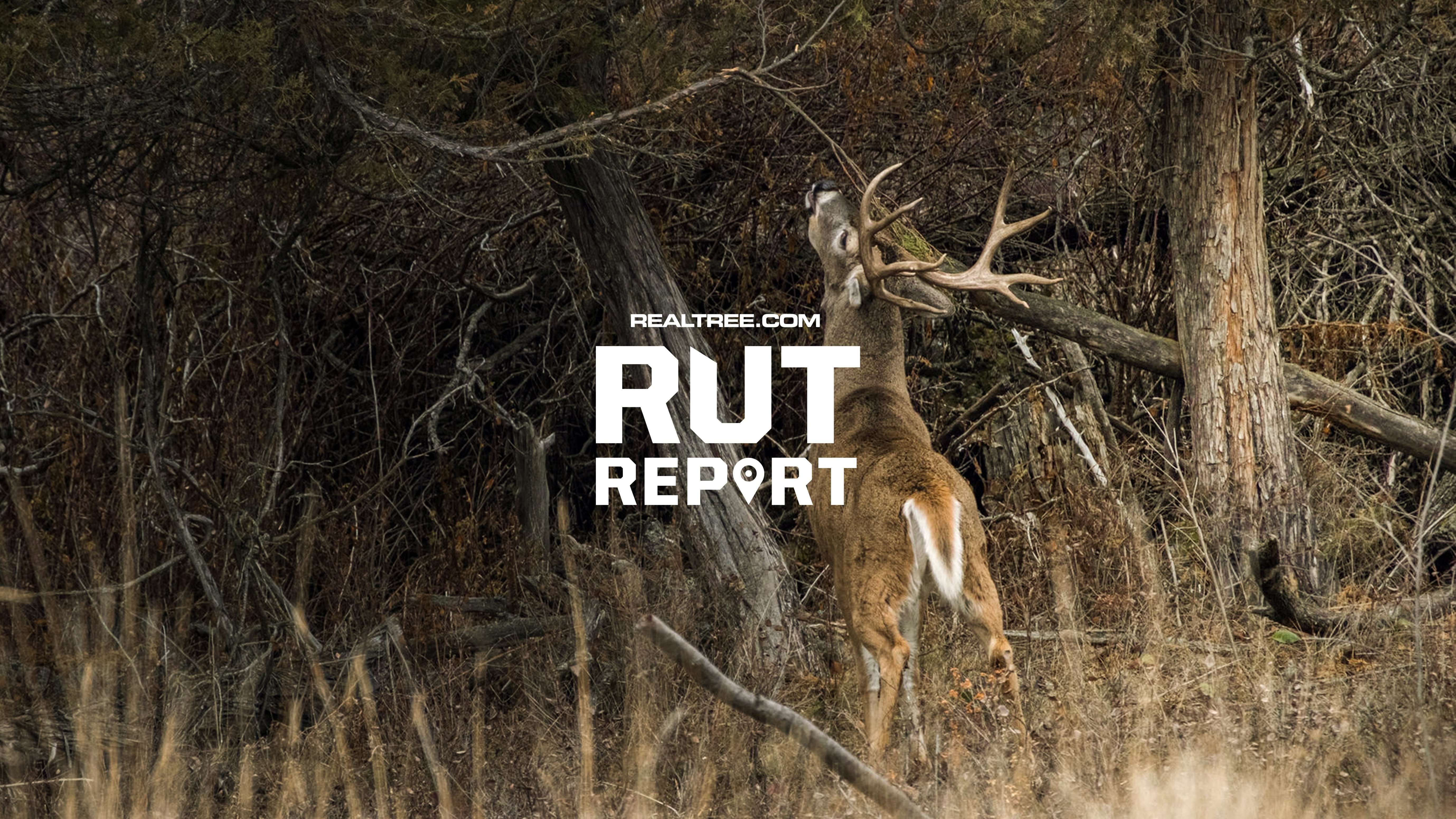North America’s Heartland boasts ample opportunity for spring gobblers. Here are some things you need to know about hunting them

Midwestern turkey hunters can take advantage of the healthy turkey population and abundance of public hunting lands. Image by Bill Konway
I arrived at a favorite Wisconsin hunting spot at around 10 a.m. It’s a block of timber next to a tilled farm field where turkeys often frequent. I grabbed my calls, shotgun, and decoy and slinked into the woods, calling as I went. I didn’t get a response for the first half hour, but then a pair of hard gobbles sounded off behind me. Two longbeards were 200 yards away, near where I’d just been 10 minutes earlier. I was a little out of position and so I stretched out prone and called once more. They beelined my way, and I collected the bigger one when he breached the 30-yard mark.
There’s excellent turkey hunting to be found across the U.S., but I love my home territory of the Midwest most of all. From the sweeping plains and rugged canyons of Kansas and Nebraska to the big timber and farmlands of Ohio and Michigan, Midwestern turkey hunters enjoy generous turkey populations and plenty of public lands on which to hunt. And although the Midwest — at least the northern portion of it — is subject to punishing winters, it’s also rich in agriculture, which allows birds to subsist.
With that, let’s get into the nitty gritty of spring turkey hunting in North America’s Heartland.
Don’t Miss: The Ultimate Turkey Gun Patterning Test

Good calling, smart woodsmanship, thorough scouting and split-second decision making are all keys to success when hunting Midwestern birds. Image by Bill Konway
ONE REGION, PLENTY OF VARIETY
Although only a dozen states in size, the Midwest harbors a few different wild turkey subspecies. According to the NWTF’s subspecies distribution map, Kansas alone has Easterns, Hybrids (a cross between subspecies) and Rio Grandes. Nebraska and the Dakotas also have pockets of different subspecies. But, all states east of the Dakotas, Nebraska, and Kansas host pure Easterns. If you ask me, the Eastern’s commanding gobbles and bold attitude hallmark a true Midwest turkey hunt.
For hunters, the fundamental difference between chasing pure Easterns and the other three is that Easterns tend to have smaller home and daily ranges because they live amidst such suitable habitat. Hybrid, Merriam’s and Rio Grande turkeys tend to be roamers with larger home and daily ranges because suitable habitat is interspersed. In other words, roost sites are often farther from food and water sources.

Overall, the Midwest enjoys an abundant turkey population thanks to aggressive conservation efforts. Depending on where you’re hunting, there are pockets of Merriam’s, Rio Grande, and Eastern gobblers, too. Image by Ryan Campbell Photos
THEN AND NOW
Although the Midwest boasts robust turkey populations today, it wasn’t always so. Clayton Lenk, the NWTF’s district biologist for Minnesota, Wisconsin, North Dakota, and South Dakota, shared some brief history.
“In Minnesota and Wisconsin, things were pretty bleak during the ’70s,” Lenk said. “Minnesota had minimal birds limited to the very southeast corner. Wisconsin had more birds, but still very few. Overhunting and lack of management essentially led to their extirpation.
“Fortunately, we have many more resources and a lot more conservation dollars today than 50 years ago,” he continued. “The scale of public and private habitat improvement today is astounding. The transporting and relocating of turkeys that happened from the 1970s to the 2000s also helped to expand and disperse local populations. In Minnesota, we now have birds clear up into Koochiching County.”
Don’t Miss: 10 Old-School Turkey Hunting Tips
While Lenk said that Minnesota doesn’t conduct population research or brood surveys, he mentioned that anecdotal observations — the number of birds people are seeing and harvesting — are extremely positive.
“I can’t back it up with scientific data, but I’d say that Minnesota’s turkey population is still rising,” he suggested. “In Wisconsin, where brood surveys are conducted, I can say that the population is stable to increasing across the state. I believe turkey hunters can expect a solid hunting season this spring.”
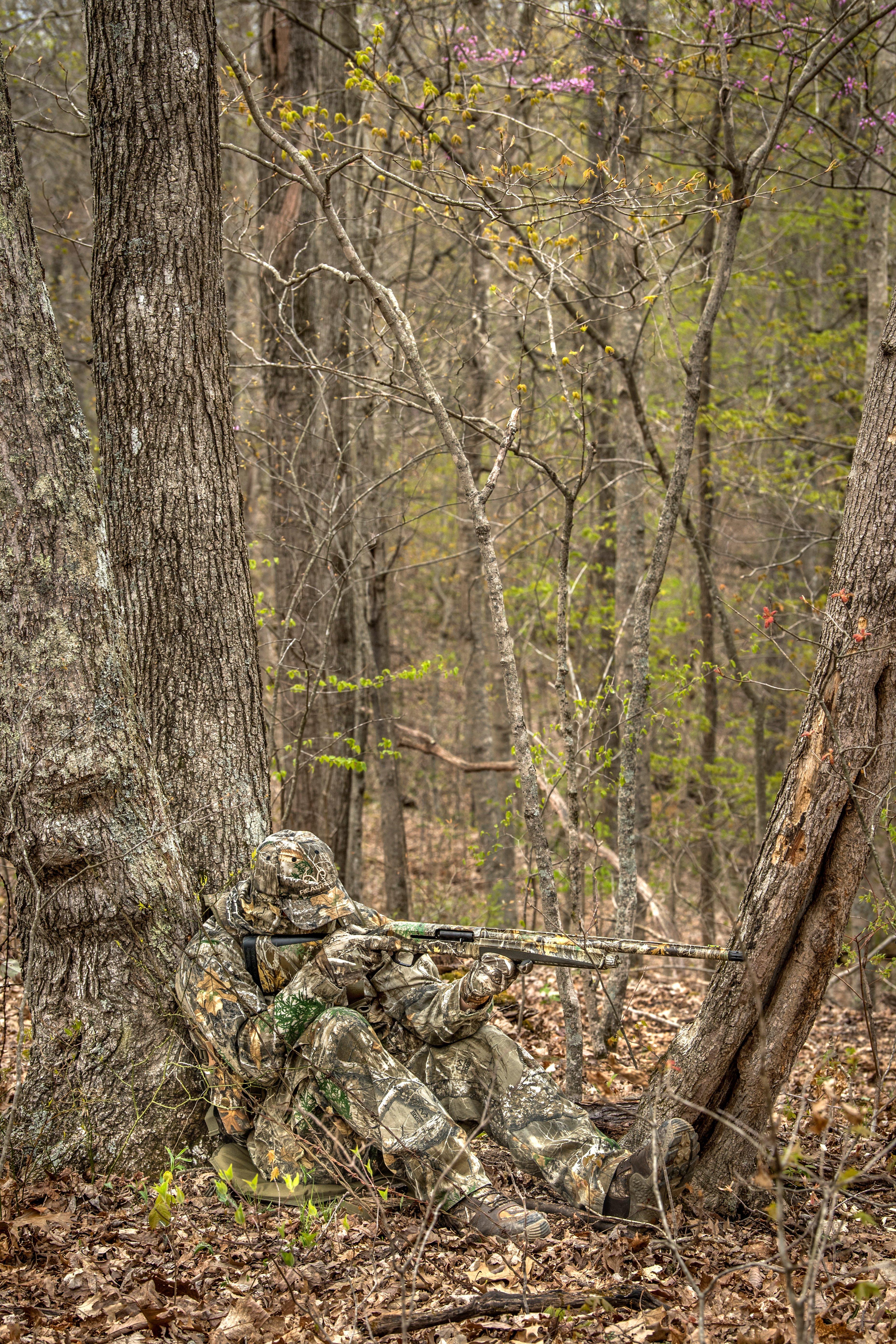
During the early season, set up as close as possible to roosted birds in the dark. Image by Bill Konway
Ryan Boyer, the NWTF’s district biologist for Indiana, Ohio, and Michigan, shared a similar report.
“Fifty years ago, turkeys were virtually nonexistent in Indiana,” he explained. “Major conservation efforts via trap and transfer were just getting going in southern Indiana as the state worked toward expanding its wild turkey population. We’ve been in the post-restoration era for some time now, and wild turkey numbers are strong in Indiana and the surrounding states. Indiana has an estimated 115,000-130,000 birds, and last year, we had a record spring harvest.”
Don’t Miss: Tips and Tactics for Hunting Prairie Turkeys
While most midwestern states are on the up and up, turkey populations in some have declined, which is cause for concern. Kansas and Nebraska, as examples, previously sold OTC tags throughout the season, largely because populations were so high. Given the recent decline, both states have tightened the reins, which we’ll discuss in the next paragraph.
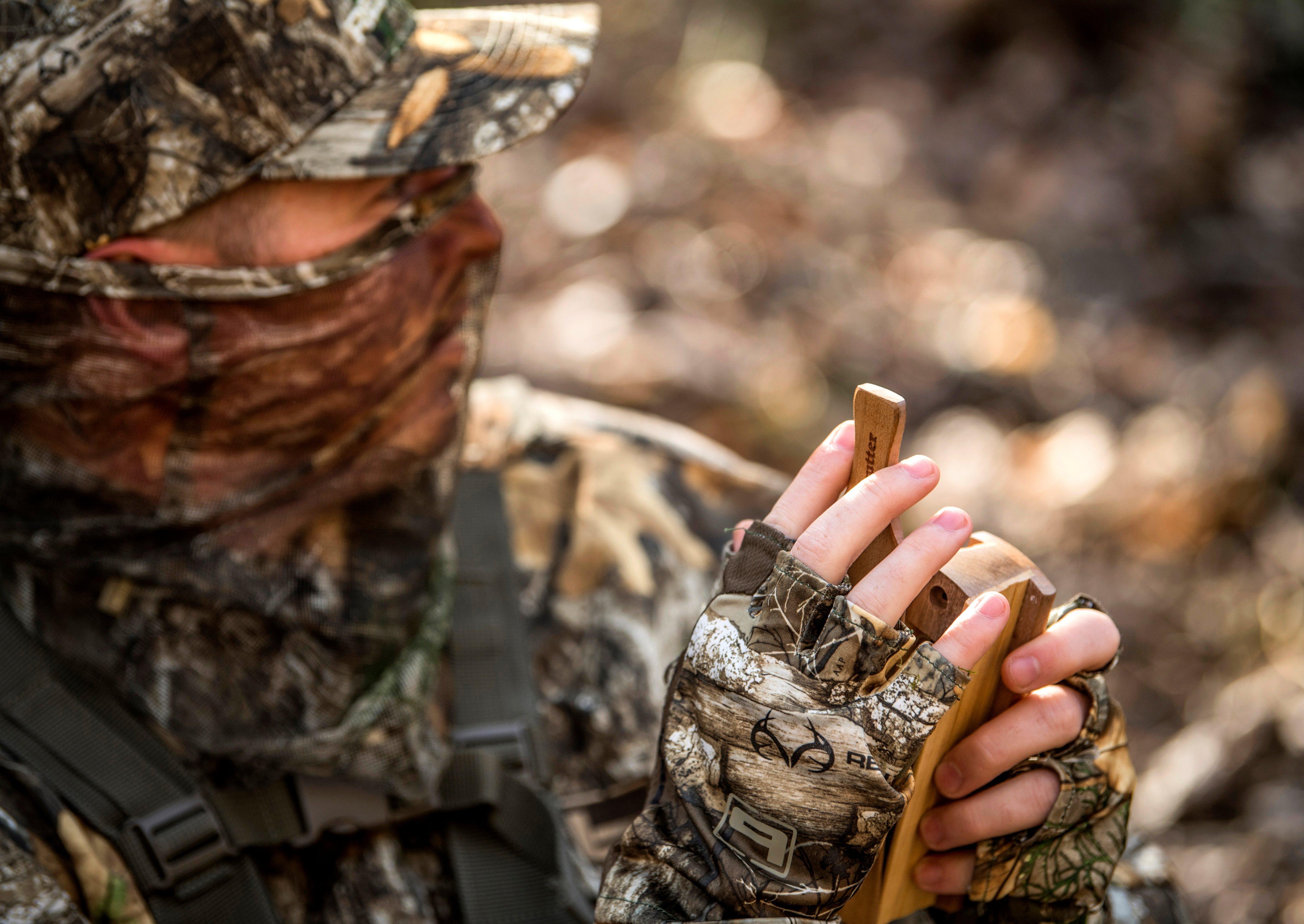
In the early season, hens aren’t really receptive, which makes the gobblers vulnerable to realistic calling. Image by Bill Konway
HUNTING REGULATION CHANGES
As you plan a hunt in the Midwest, it’s important to note that some state wildlife departments have implemented changes to tags, seasons, and regulations. Following are some examples, but check the regulations for yourself.
Due to declining turkey numbers, Kansas has incorporated some reg changes. Nonresident hunters previously could arrive and purchase two OTC turkey tags, but nonresident tags are now distributed through a draw. The application deadline was February 9. Following the draw, leftover permits were sold first-come-first-served and are sold out. Kansas now has a one-bird bag limit for tag-holders, and the fall season has been suspended.
Don’t Miss: The 28 Gauge Is Taking Over the Turkey Woods
Nebraska also has made changes. In 2023, it switched to a 10,000 nonresident permit quota (first-come-first-served) rather than unlimited permits, and they sold out in January. The permit limit per hunter is two rather than three, and only one legal bird may be harvested per day during the spring season. Nonresident permits increased from $125 to $140.
Missouri previously stopped all turkey hunting at 1 p.m. each day. For 2024, private land hunters can continue hunting until sunset. Public land hunters still must leave the woods at 1 p.m. Missouri has also increased its permit prices.
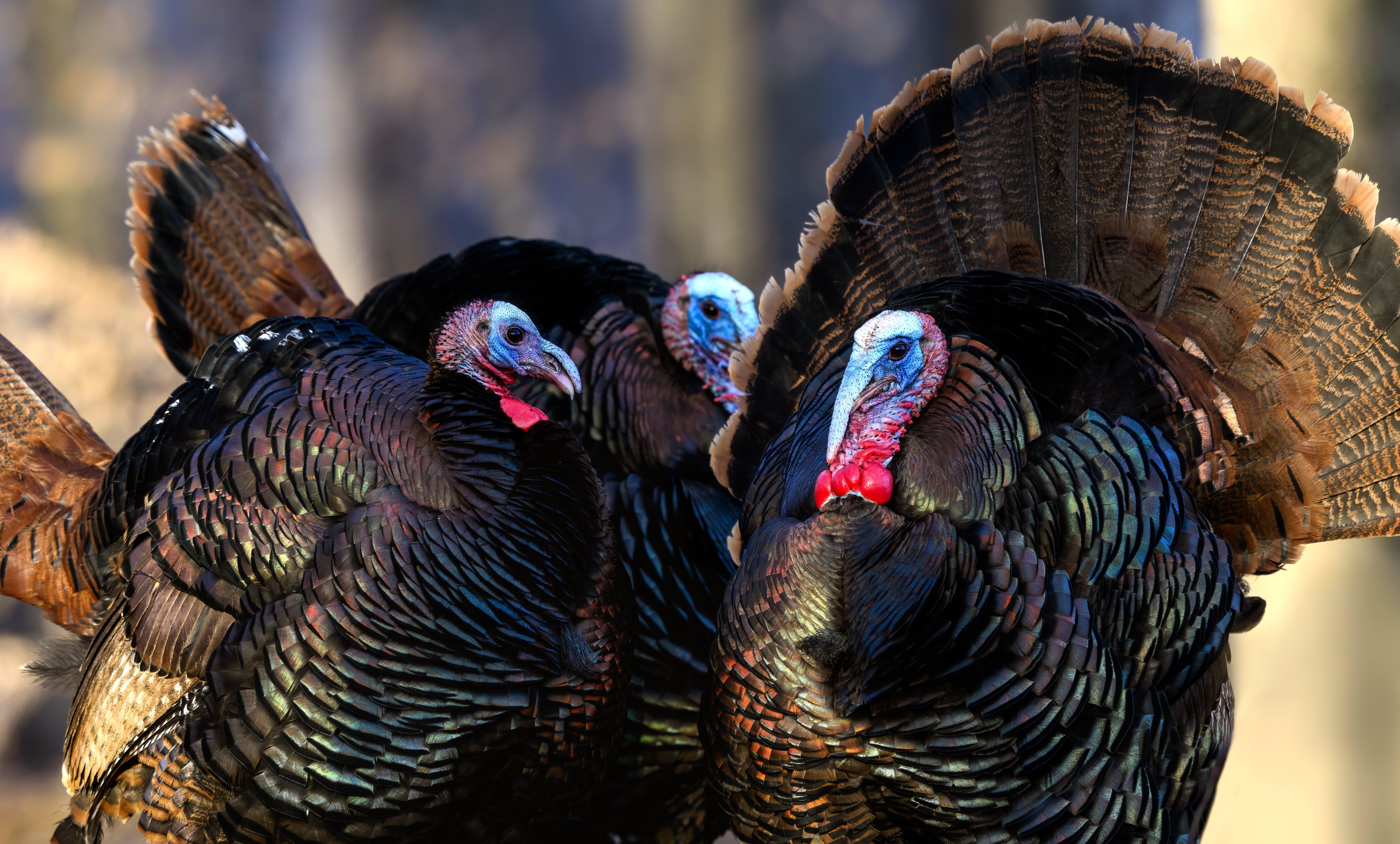
Make sure to check changes to tags, seasons, and regulations in the Midwestern states you plan to hunt. Image by FotoRequest
GO-TO TACTICS FOR THE EARLY SEASON
During most years, the winter-to-spring transition happens during the Midwest openers. This has winter flocks — multiple toms, hens, and jakes — still fairly bunched up, though some segregation has happened and will continue happening in the following weeks.
Brian Lovett, Wisconsin native, Realtree.com editor and seasoned turkey expert, generously divulged his favorite tactics for April birds.
“Good calling, smart woodsmanship, thorough scouting, sneaky moves, and solid split-second decisions can produce all season long,” Lovett said. “However, I tend to be a bit more patient and careful during the early season than at any other time. Many seasons — Wisconsin, Minnesota and Iowa, for example — open relatively early, and the woods are wide open. Moreover, turkeys are still usually feeding regularly in open ag fields, and the odds of bumping them are fairly high.
Don’t Miss: The 2025 Midwest Region Turkey Hunting Forecast
“So, I try to take a sneaky, low-profile approach, getting as close as possible to roosted birds in the dark, and then being very careful with subsequent movements,” he added. “Also, many hens aren’t really receptive, which makes the gobblers very vulnerable to realistic calling. During the early season, I’m very confident in finding turkey sign, setting up on it and cold-calling for fairly long periods. Your odds of working a bird are pretty good, and you’re not bumbling through the woods and bumping turkeys.”

During the mid-season, gobblers will split away from the hens around late morning and are vulnerable. Image by On The Wildside
Lovett shared what a typical early-season midwestern hunt in his shoes might look like.
“Ideally, I’ve roosted a gobbler the previous night,” he said, “then I’ll slip as close as the darkness, cover, etc. allow and hope for a good fly-down hunt. If he fades off — with hens or otherwise — and I can’t intercept him, I’ll likely refer to my scouting, find a good setup with lots of turkey sign, and then call periodically for 1-2 hours. If that fails, I often head to other good spots and repeat the process until I engage a turkey or have to quit hunting. Of course, if a turkey responds but doesn’t come in, I don’t hesitate to move on him if the terrain and cover allow. As I said earlier, smart maneuvers can pay off all season long.”
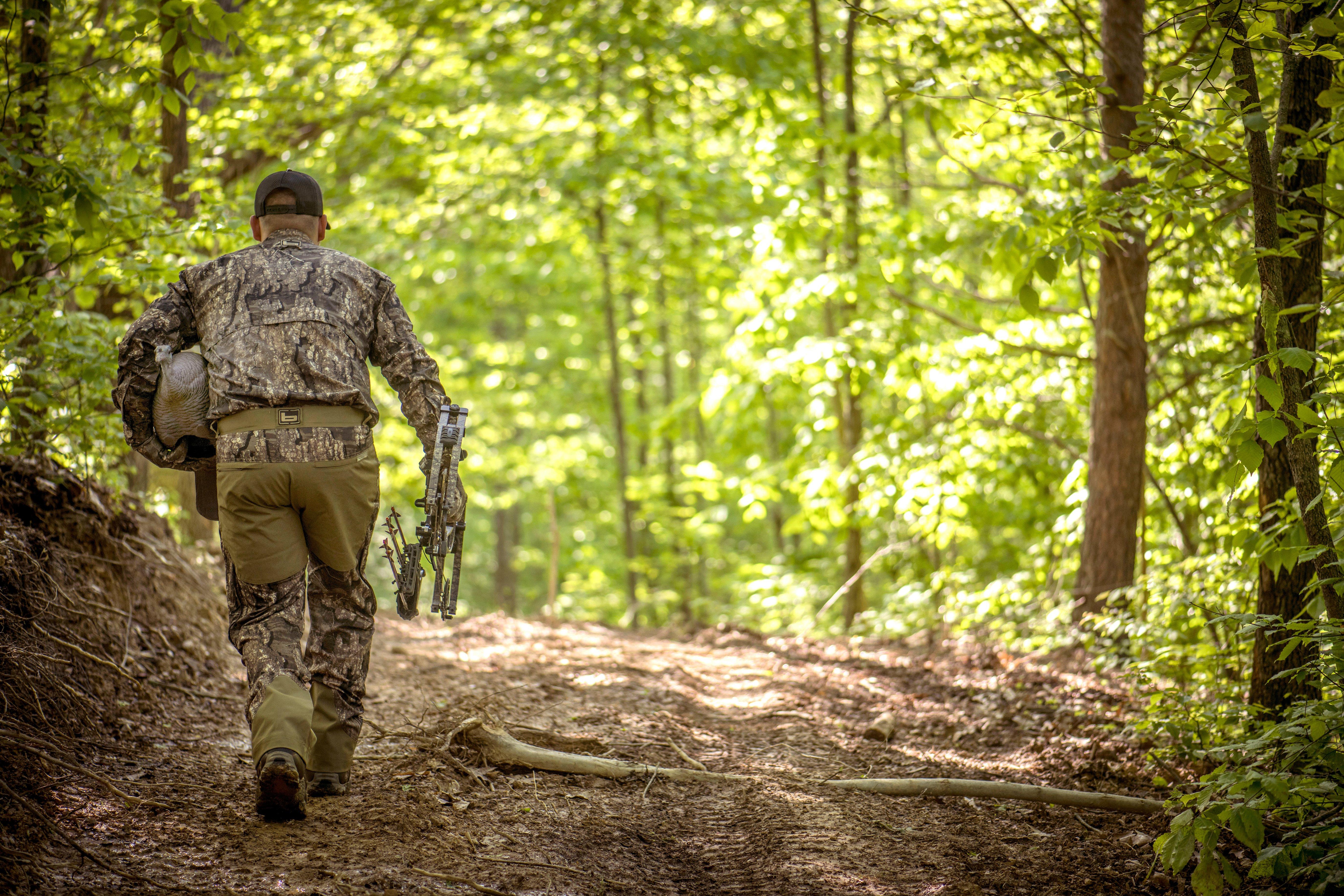
Don’t hesitate to move in tighter to a gobbling bird if he’s not coming in to your calls. Image by Bill Konway
GO-TO TACTICS FOR THE MID-SEASON
The mid-season is Realtree pro-staffer Melissa Bachman’s favorite time to hunt in her home state of South Dakota because birds are active and the weather is typically nicer than in April. Another reason she and her family love early May is because many other hunters are finished hunting, which increases the odds of getting permission to hunt on private properties.
Don’t Miss: How to Avoid the 4 Biggest Turkey Calling Mistakes
As for tactics, “We love the midday timeframe during early May,” Bachman said. “It isn’t necessary to be out there at daybreak; we usually don’t go out until 9-10 a.m. Often, gobblers split away from the hens around late morning and are vulnerable. We figure out where they go for the midday hours and hunt there. Our decoy setup is usually a submissive hen and an aggressive jake, although we sometimes use a Dave Smith Strutter depending on how the birds are responding.
“Of course, our setup depends on whether we’re bowhunting or shotgun hunting,” she continued. “When we bowhunt, we pop up a blind in what we believe is the best spot, then we set out a submissive hen. It brings the big toms in and positions them for an easy shot as they attempt to breed the decoy. When we’re shotgun hunting, we’re much more mobile since we usually aren’t carrying a blind. We move around until we get a bird gobbling, then we set up. If he isn’t coming closer, we move in tighter. Knowing the terrain is extremely helpful, so we combine our knowledge of the terrain with the HuntStand app as we move on birds.”
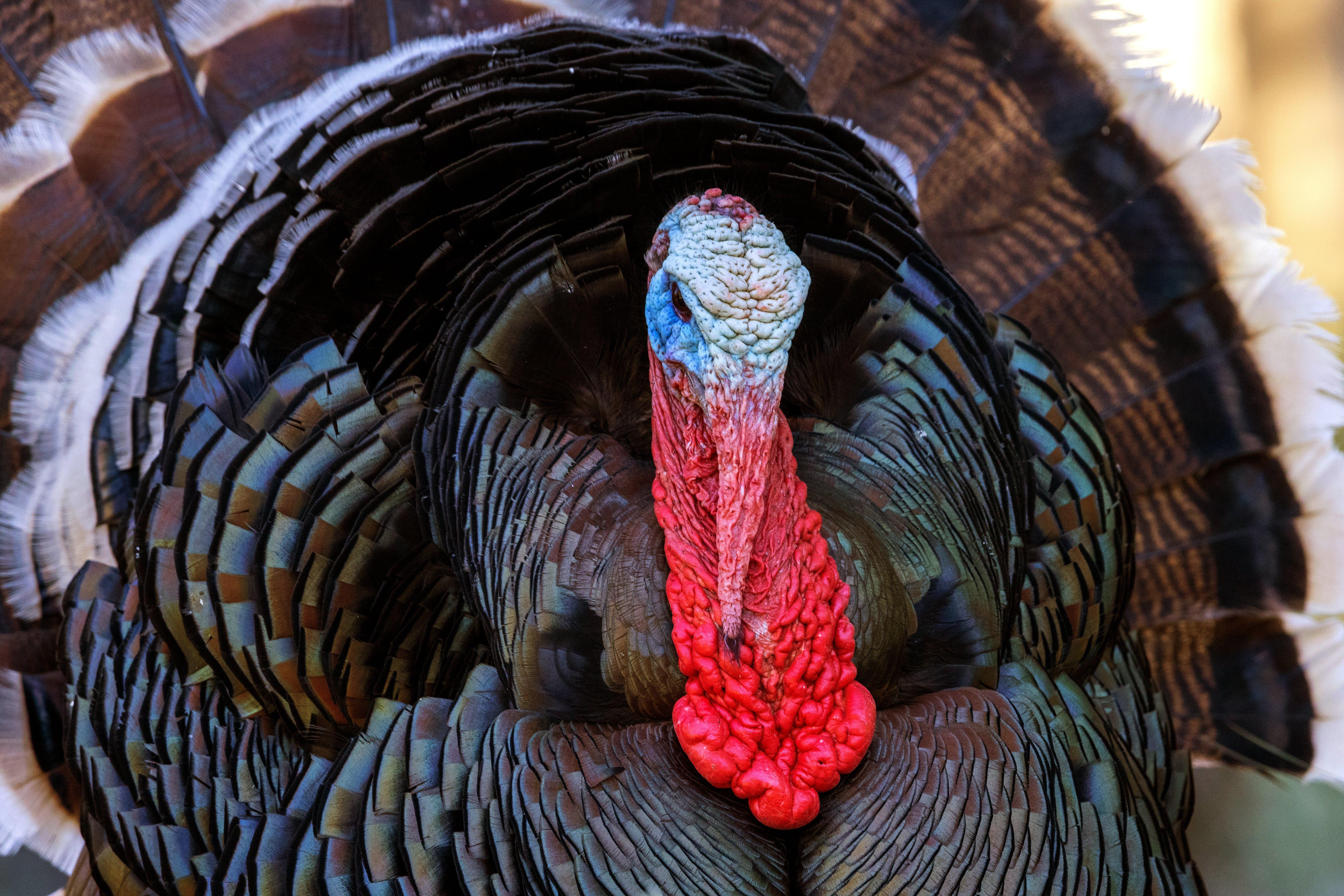
Merriam’s tend to roam farther than their Eastern counterparts. Image by Danita Delimont
GO-TO TACTICS FOR THE LATE-SEASON
While I hunt throughout the season, my personal favorite time to hunt in the Midwest is the final week of the season at the end of May. I can’t count how many late-May bow and shotgun outings have ended with a gobbler on the ground between 5 and 6 a.m.
Although daybreak comes before 5 a.m. in central Wisconsin at that time of year and rising at 3:30 a.m. is difficult, I don’t skip the fly-down hunt. Many toms roost alone, and they often fly down and advertise in the same place for at least a few consecutive mornings. There are fewer hens and fewer hunters, so lone gobblers can be ultra-responsive.
My go-to play is to scout and find a gobbler strutting all alone at daybreak. The following morning, I set up as close as possible to where I believe he will fly down so that he sees my decoys immediately. Most often, he comes right in. I’ve had luck with hen decoys, but I usually put an aggressive jake out, too. The last thing a hot late-season gobbler wants to see is a jake with a hen on his turf, and he usually comes in fast and furious. I’ve taken many a gobbler using this approach.
Of course, the fly-down hunt doesn’t always produce. Keep hunting throughout the day if you can. As I said, there are fewer hens available, and you’re liable to catch a receptive tom all on his own at any time of the day and bring him in with a few yelps. If he’s gobbling but held up, I try to toss some leaves to be more convincing.
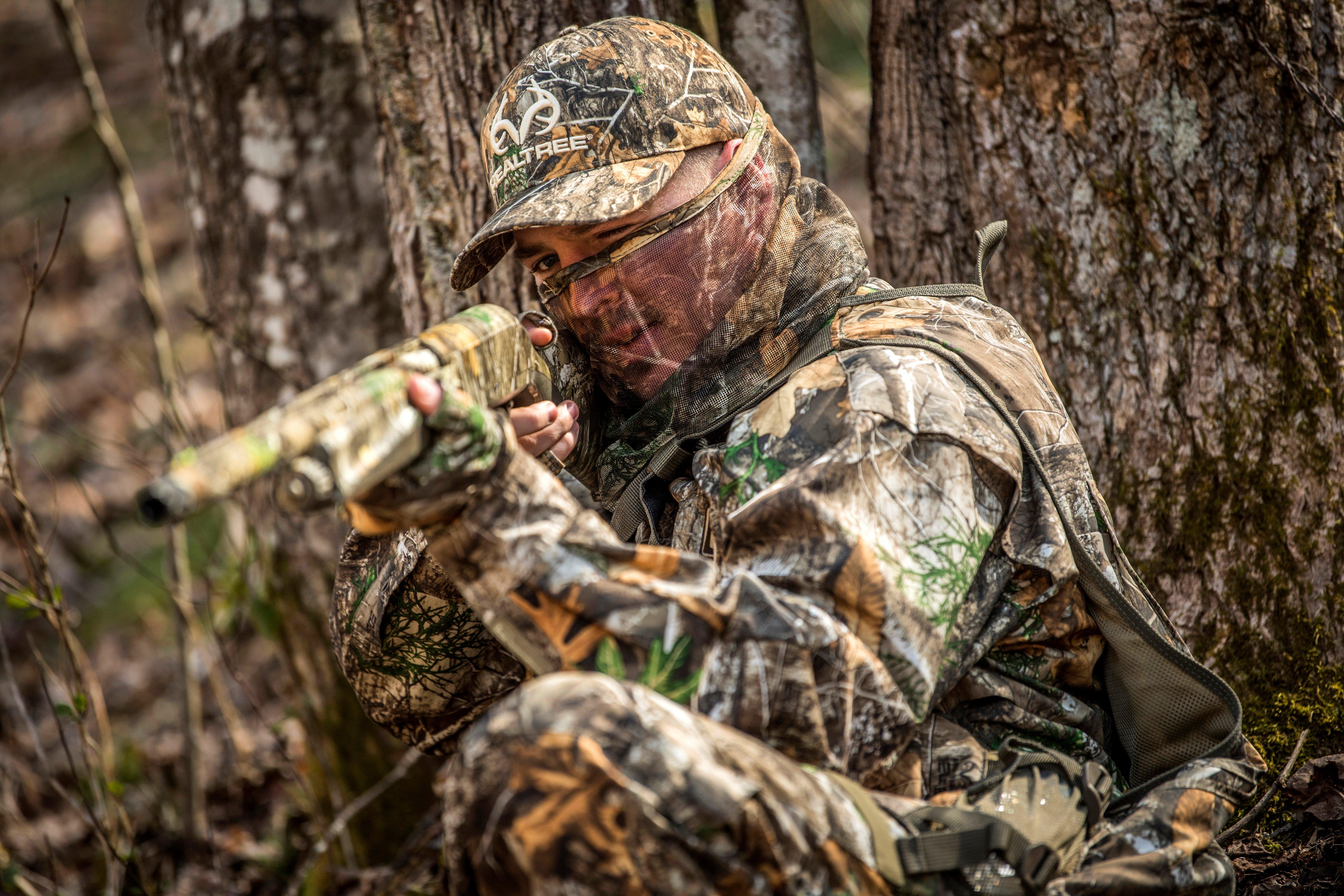
During the late season, continue to hunt throughout the day with the hopes of catching a receptive tom on his own. Image by Bill Konway
CONCLUSION
To close, the Midwest has several population centers — Chicago, St. Louis, Kansas City, Detroit, Milwaukee, and the Twin Cities — that broadcast turkey hunters all over the region. And, hunters from other areas of the U.S. travel to hunt here, too. So, it’s a given that turkeys across the Midwest are subject to substantial hunting pressure, which makes them challenging to outfox, especially on public ground. But we have a lot of birds, and with the tactics outlined above, you’ll stand a good chance of putting your tag on one of them.





